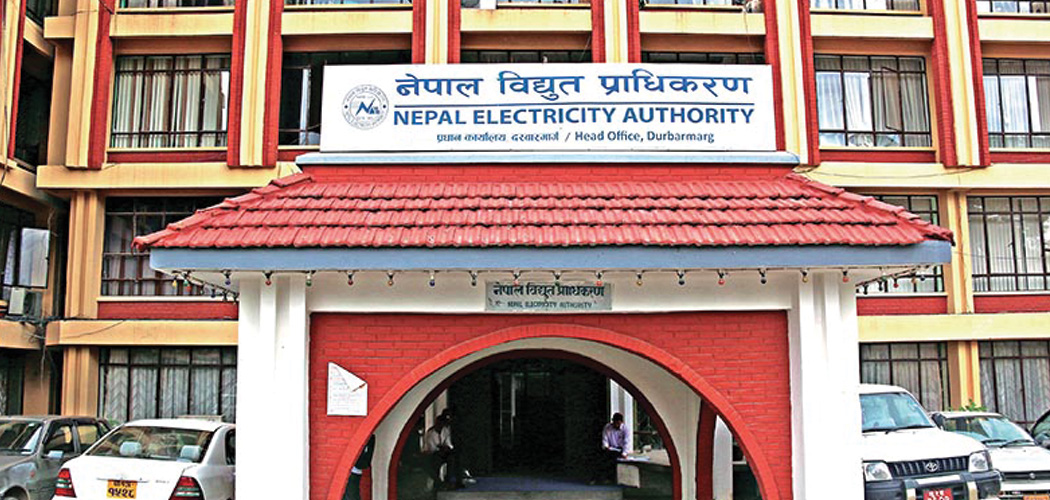Energy Update
NEA to cut power in industries with prior notice

The unthinkable has happened: With reduction in electricity generation within the country and similar energy dearth in India, load shedding has started in industries across the country.
The NEA has not been able to supply electricity to the industries round the clock for three days as India could not supply the required electricity to the Nepal Electricity Authority (NEA) and reduced power generation in Nepal, said Kul Man Ghising, managing director of NEA.

The NEA was compelled to cut power in the industries up to 12 hours at night (from 6 pm to 6 am) after it was unable to purchase enough electricity from the India energy market, he said.
He, however, said that NEA is effortful to provide maximum electricity to the industries based on the import from India through the Indian Energy Exchange and bilateral agreement.

According to him, there will be power cuts to the industries during peak hours and nights for 10/15 days.
He also said that prior notice of power cuts would be given to the industries from today.
'India has not been able to supply enough electricity for the past three days due to the energy crisis. The supply system in India is in disorder due to rising coal prices in the international market and rising demand for electricity in the Indian energy market. Due to this, we could not buy enough electricity and the problem came,' he said.
At present, only about 2,000-3,000 MW of electricity is coming to the Indian Energy Exchange for trading, whereas a few weeks ago it was around 18,000 to 20,000 MW daily.
It means, the energy trading in IEX has dropped by almost six times due to short supply of coal and raising its price, Ghising said.
'Despite being a competitive market, the maximum price has been fixed at IRs. 12 in the IEX. All the bidders have been bidding at IRs. 12. The power is being provided in proportion to bidders based on their quotation. We can only bid a maximum of 500 MW. We get around 80 to 100 MW from IEX,' he said.
In the meantime, electricity generation in Nepal has also dropped by around 150 MW over the past few days due to declining water level in the rivers. At present, Nepal's production is 900 MW. Around up to 1,400 MW electricity is being generated during peak hours using the Upper Tamakoshi Hydropower Project.
However, Nepal's demand is 1,500 to 1600 MW. Up to 300 MW of electricity is being imported from India on an average to meet the demand of production and supply, he said.
The demand for electricity in the Indian market has surged since April. Earlier, the demand in India was 180,000 MW but now it has reached 200,000 MW.
Due to this, there is no electricity in the exchange market of India, said Ghising.
Nepal has been buying electricity from India through three channels, IEX, the state of Bihar and Power Trade Corporation. However, now that India is going through a power crisis, it has been impossible to buy electricity through these three means.
The Bihar government has not been able to supply electricity to Nepal at night for the past one month and it informed NEA that it has not been able to provide electricity in the afternoon for the last three days, Ghising said. According to him, there will be a problem in the electricity supply in the country by mid-May this year.
Opportunities for Nepal
Even though NEA was compelled to cut power for industries for a few weeks, there is an opportunity for the country to reap benefits by exporting electricity to India after a month, he said.
"Our power generation will increase significantly and will exceed the demand after July 2022.
We can sell energy at a competitive rate through the IEX as there is a projection the energy crisis in India will linger for a few months due to Ukraine and Russia war,' he said.
According to him, around 400 MW of electricity will be sold in the Indian Energy Exchange daily for around five months from July 2022. 'We can sell electricity for around Rs. 30 billion if the present rates remain in the Indian Energy Exchange,' he said.
According to Ghising, the NEA is still working to increase electricity consumption even though there is a problem in supply during the dry season as power generation will be wasted during the rainy season.
Conversation
- Info. Dept. Reg. No. : 254/073/74
- Telephone : +977-1-5321303
- Email : [email protected]












.jpg)

